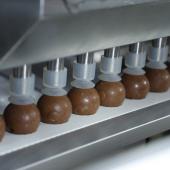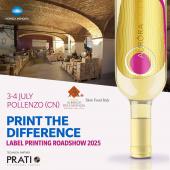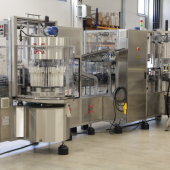Almost new, rather, brand new
B&R’s Aprol factory and process control makes its debut in Italy: an innovative package, though already widely tested in other countries. So says Luca Galluzzi, head of the Austrian multinational’s Italian branch, clarifying the potential benefits for the packaging world. by Stefano Lavorini
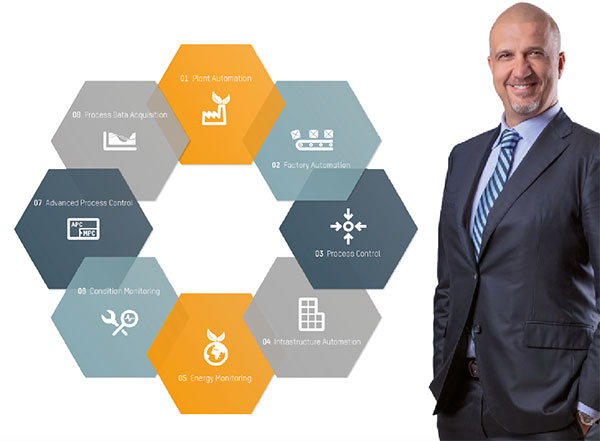
Among the instigators of the “new” world of automation, B&R has managed to innovate much and well in the field of hardware platforms - both concerning functions, but also involving integratability, scalability and flexibility - as well as choosing a single development tool and a single database to facilitate and simplify the work of the users of their systems, these being first and foremost OEMs as well as end-users.
One thing leads to another, and so the company has also seen fit to apply the same key concepts used in its machines to factory and process control, with the aim of offering an alternative to DCS structures and solutions, now considered outdated, monolithic and lagging behind technologies available nowadays.
Hence, bolstered by installations and experiences made elsewhere, it’s time to introduce the new Aprol platform to Italy, as head of B&R Italia Luca Galluzzi told me. During our encounter, he serenely and explanatorily traced out the path of product development, identifying the implications of most interest for packaging machine manufacturers and users.
From machine to factory and process automation: with what objectives?
B&R has established itself as a leading company in the OEM market through original concepts, which do not represent an “embellishment” of what is already available, but something truly innovative: such as integrated automation, scalability and flexibility in the choice of hardware platforms,the unique programming environment, entirely abstracted from the hardware platform.
It is in fact no mean advantage to be able to first develop the project, simulating it entirely, and, only after that, to choose the hardware components most appropriate to your needs.
As far as the communication networks are concerned, we have paved the way for “open automation”, something that has also led to the sharing of safety information on the bus, leading to an integrated safety on the network, that for its nature is programmable and more reactive, “smarter”, and more economical compared to the classic cabled safety.
There is a lot of talk of Industry 4.0, of smart factory, of the “Internet of things”…
but in actual fact this is what B&R have been offering for a number of years, that is, the actual possibility of using remote intelligence that can dialogue together, like the so many components of an orchestra.
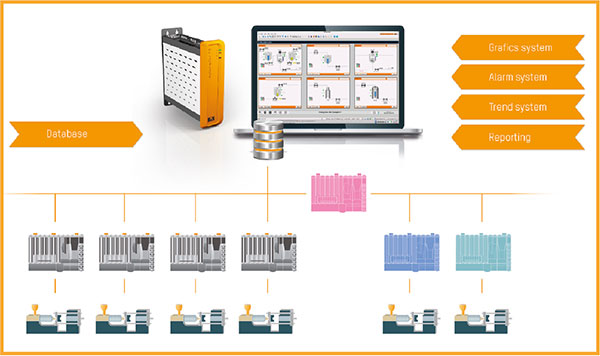
The focus hence is to simplify operations, to make them more accessible...
Simplicity and flexibility due to integration. And these are the very characteristics of Aprol, the platform that we are launching this year in Italy: an innovative control from the technological point of view, but already sufficiently tested, insomuch as already used in German concerns and concerns that work with German-speaking countries and in those strongly oriented to investment in infrastructure, such as China and India.
Why now? Because the type of product is now ripe to be proposed in a developed market like the Italian one, and I intend to point out, not necessarily only to major packaging and wrapping system manufacturers.
Hence Aprol is also a suitable platform for small and medium-sized companies?
That’s right. Manufacturers are now confronted with a global market, where margins are reduced, forcing them to adopt technologies to optimize production and reduce operating costs. In this context Aprol offers scalability and modularity both in hardware and software: this vision is what now enables each customer to achieve a system tailored to its real production needs, which can then grow, when and as needed, without wasting work done and by reusing what has already been developed.
I must point out that all this is being promoted under the “genetic” characteristics of B&R: a commercial reality dedicated to sales but with a deeply technical soul, hence capable of assisting users in all aspects of their manufacturing development.
In Italy we have 5 concerns, in Milan, Bologna, Padua, Brescia and Turin, all able to support our customers; we also run two Academies, in Milan and Bologna, that look after the training, with technical seminars available to those who wish to learn more about automation technology and our systems.
What can be done with Aprol and with what benefits?
Aprol enables the addressing of key, sensitive issues, such as energy and condition monitoring, the acquisition of process data and, not least, their interpretation and the implementation/optimization of production processes and factory control methods.
In practice, an equipment manufacturer might for example find the energy monitoring function useful because, in the event of an energy-intensive process, there may be advantages in outlining and reporting the same to the end user, so as to highlight the peculiar features of its proposal.
Another case is that of preventive maintenance, this being the technological module that enables the machines behaviour to be analysed by carrying out a check-up on its state of health, and to program the set operations to make it even more efficient. If you have mechanical wear, and this data is interpreted correctly, you can first of all make the most of the life of the component, thereby addressing the diseconomies with scheduled maintenance carried out in time. Something which might be useful for the machine manufacturer and which can also be “sold” to the user.
From the machine to the factory: the step seems a short one...
Aprol offers an exceptional protection of the end-users’ investment. To maintain the above, if an equipment manufacturer provides an energy monitoring solution, our system being highly modular, nothing prevents the end user from subsequently implementing new features, leveraging the same hardware: for example, he might implement the energy monitoring on other machines in operation at the facilities. Similarly, if the end user has a machine with a module for preventive maintenance, he could add other modules to gather information and control units of a line or the whole factory, thanks to the device remotability (actuators , sensors, etc.) and connections to all field buses that in these years have established themselves on the market. This is due to the fact that Aprol is not only modular but highly scalable, which allows you to just take and pay for what you need at that given moment in time. Moreover, it is a transparent and open system even compared to MES and ERP management systems normally used in the factory.

Hence you have hardware components used for machine automation, and hence with the same level of performance: is this also a good choice for process control, that has slower dynamics?
A discriminating element, that strongly characterises Aprol among DCS solutions, is the use of the same hardware platforms used at machine level (I/O, CPU, ecc.), that are also perfectly suited for the factory and process control field thanks to their great reliability, redundancy, openness towards any sensor and actuator, etc: all characteristics useful when dealing with process. But having been developed to offer performance demanded on-board machine, they can provide something more: the shorter the intervention times - in the order of milliseconds - the more reactive and efficient the process in question. Indeed, the limit between process and discrete control is becoming evermore blurred. This means machine builders can access functionalities more intended for the factory and viceversa.
I spoke of scalability and this means solutions ranging from 50 to 500.000 I/O points; hence, once again, with an appropriate package, which includes CPU and redundant networks as well as specific features of the said process, very high efficiency in economic terms compared to DCS systems can be obtained: generally speaking an interesting point for all players, from the end user to the manufacturer and the system integrator.
Aprol is also an alternative to PLC based SCADA control systems, which are economical to run but don’t have the same control capacities as DCS.
How much do the demands of the end user count for in the field of automation?
They are still very important, which is why B&R is investing a lot in gaining buyer endorsement.
For some time we have created a key accounter team, which has the function of acting as a link between the machine manufacturer and the end user. Both can gain advantages and specific benefits by choosing our solutions.
For example, today, tackling a machine or plant emergency does not necessarily mean shutting down the mechanism, this can be limited down to a speed reduction, in compliance with regulations. This in practice means having a higher machine productivity and efficiency, things that the customer surely appreciates.
And yet again, our integrated safety enables the positioning of the safety barriers closer to the machine, thanks to the fact that our intervention times are 10 times greater than conventional ones, with the result of reducing the dimensions of the machines bulk on the ground, thus optimizing the production space.
Another qualifying element for the end-user is the ability of the automation system to provide information on the health of the system via the installed hardware, for a timely diagnostics and predictive maintenance. This information is accessible via a normal web browser on PC or on any mobile device, and is presented in an intuitive graphic form that makes it simple to interpret. It is also available as native and free, without the need for special programming.
In short, it seems that the mechanics are now playing an increasingly marginal role, that no longer makes the difference... Today, the same machine can give different performances depending on the automation solutions chosen. But, if this is true, does this also means that with the same electronics you can have machines from different manufacturers that offer the same performance?
The mechanics are decisive in any machine, and we know that Italy can boast an undisputed excellence in this field. All the same, for many aspects you need to adopt an interdisciplinary approach and tackle the project in mechatronic terms.
Very often today the software, in the way it is developed, stands as the distinguishing factor, also because it forms the ground where the various heads involved in a project (mechanical, electrical, automation) can share the information.
It is the knowhow on processes that differentiates the machine builders and this is safely stored inside the software, which constitutes an advantage in that software is simpler to protect than a mechanical part.
Though having chosen the same automation system provider does not necessarily put all the various players on the market on an equal footing, because each retains his/her own characteristics depending on the degree of innovation: innovation that is no longer in the design and creation of a mechanical piece, but mostly enclosed in a program.














